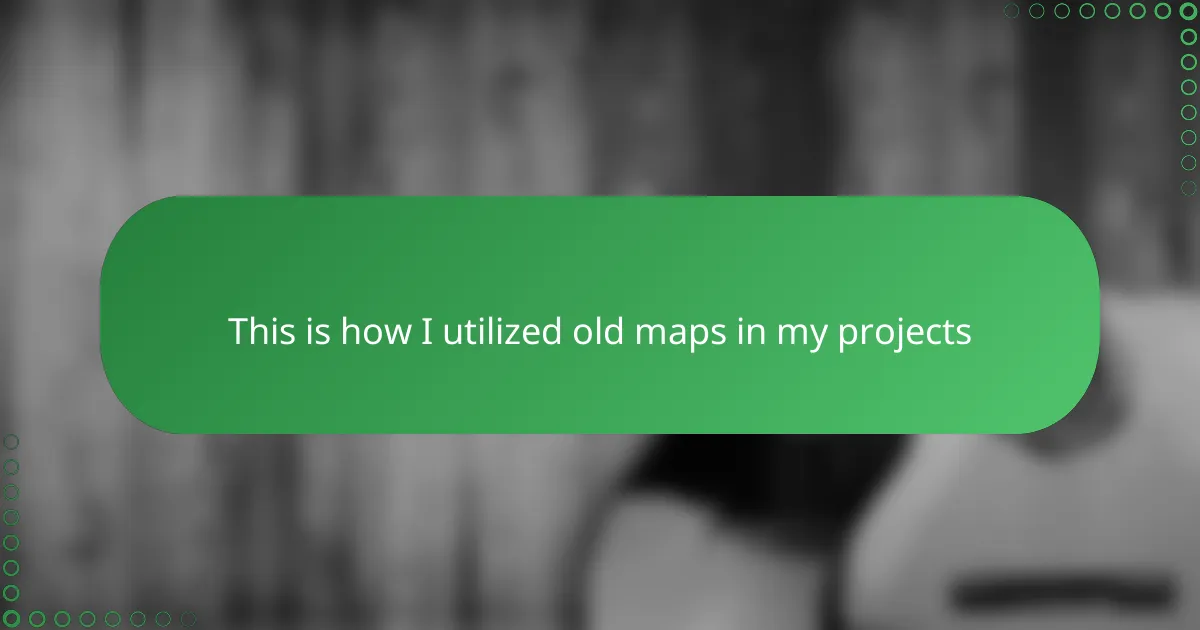Key takeaways
- Handmade paper crafts showcase unique textures and character, providing a personal touch that machine-made options lack.
- Old maps can enhance crafts with their historical charm, offering narratives that connect the creator to places and times past.
- Preparing old maps carefully, including flattening and reinforcing, is crucial to preserving their beauty during crafting.
- Layering techniques and gentle adhesives help maintain the vintage appeal of maps while allowing creativity to shine in projects like journals and decorative envelopes.
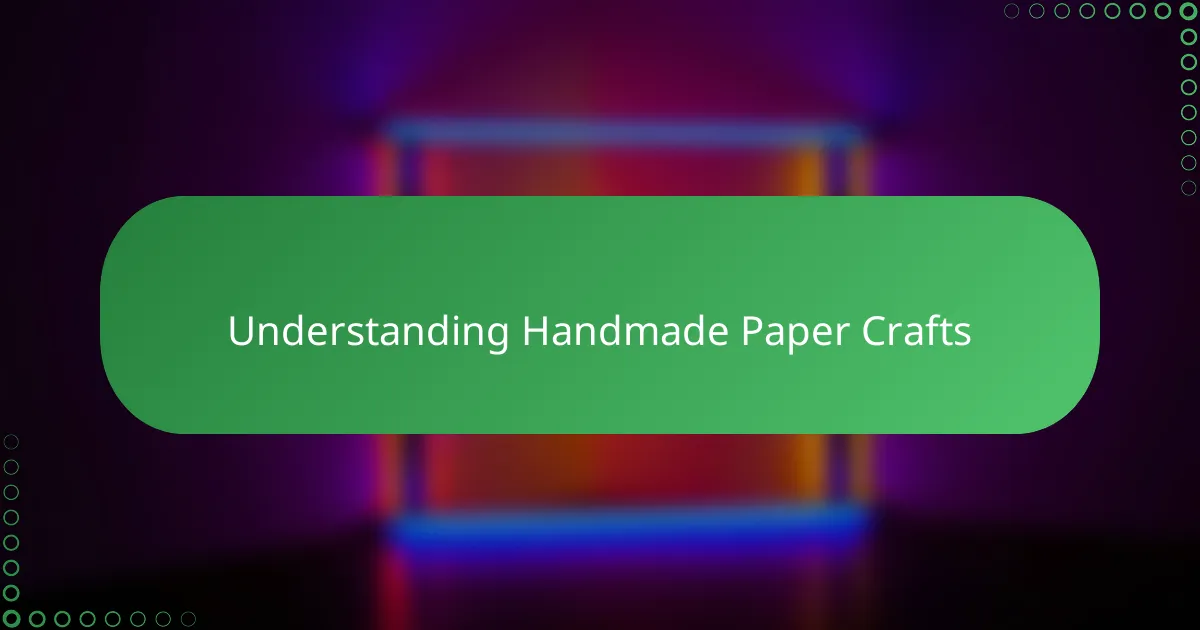
Understanding Handmade Paper Crafts
Understanding handmade paper crafts is about appreciating the unique texture and character each sheet carries. When I first worked with handmade paper, I was amazed by its subtle imperfections—they make every piece feel alive and personal, unlike anything machine-made.
Have you ever paused to feel the fibers running through a handmade sheet? That tactile experience connects you to centuries of tradition, making every craft project a tiny celebration of artistry and patience. It’s this depth that transforms simple materials into cherished keepsakes.
For me, the real magic lies in how versatile handmade paper can be. Whether it’s delicate note cards or intricate collages, it invites creativity with a warmth and authenticity that’s hard to replicate. Isn’t that what truly makes a craft memorable?
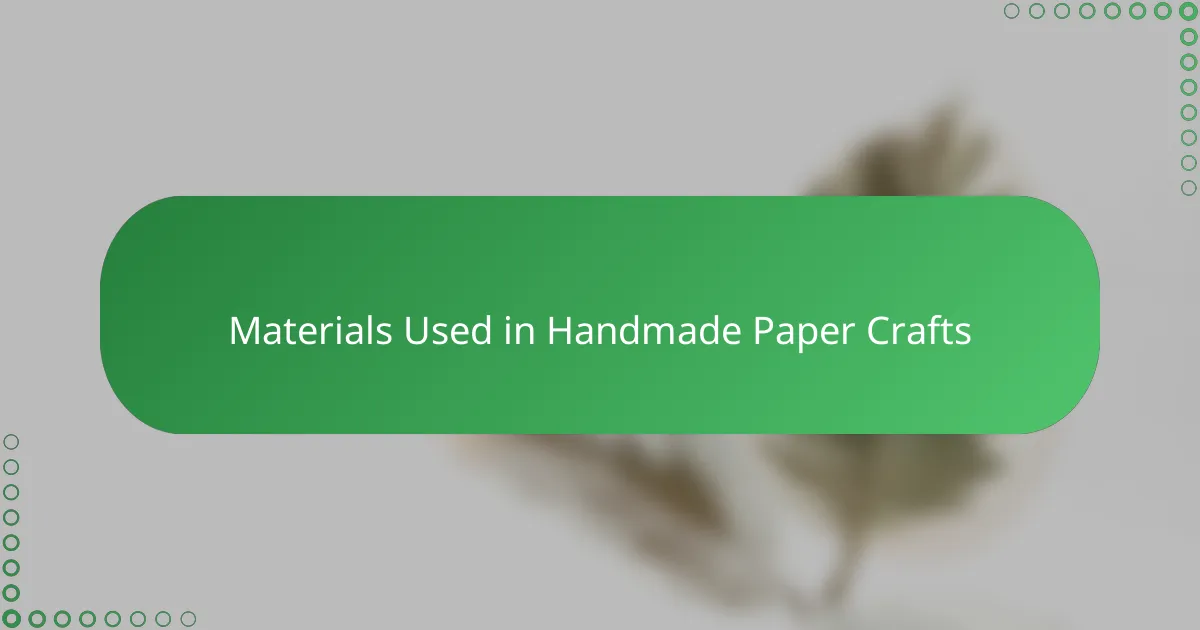
Materials Used in Handmade Paper Crafts
When I gather materials for my handmade paper projects, I always start with natural fibers like cotton or flax. These fibers give the paper a strength and softness that feels so satisfying to work with. Have you noticed how the choice of fiber can completely change the character of the finished piece?
Beyond fibers, I’ve found that incorporating recycled elements adds a meaningful layer to my crafts. Scraps of old papers or even leaves pressed between sheets create textures that tell a story. It’s like giving new life to forgotten things, and that sense of renewal always inspires me.
Water and simple tools like molds and deckles are my silent partners in this craft. The way water carries the fibers, then slowly dries to reveal a unique texture, never ceases to fascinate me. It’s a delicate dance of patience and timing—have you ever felt that quiet thrill when a sheet peels perfectly from the mold? That moment makes all the effort worthwhile.
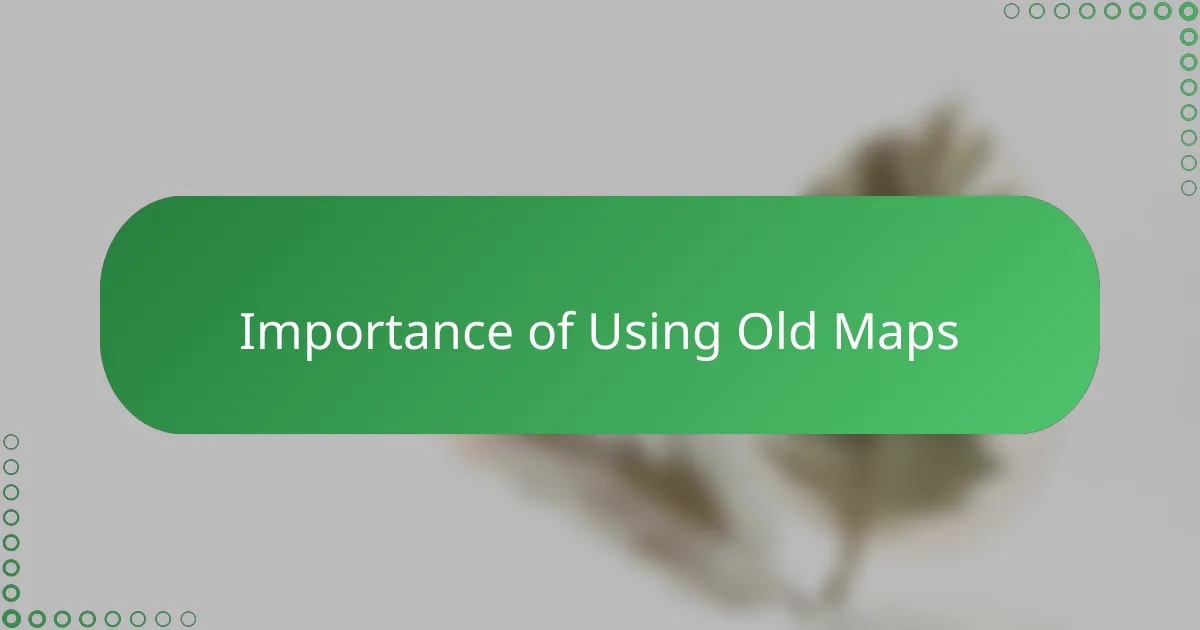
Importance of Using Old Maps
Old maps hold a special charm that goes beyond their visual appeal. When I first started incorporating them into my paper crafts, I was struck by how their faded lines and weathered edges added a sense of history and mystery to each piece. Have you ever noticed how an old map can make you pause, imagining the stories stitched into its creases?
Using old maps connects my work to places and times long past, infusing each project with a unique narrative. It’s more than decoration—it’s like carrying a piece of the world’s journey in my hands. This emotional depth elevates simple crafts into meaningful keepsakes that invite curiosity and conversation.
What truly captivates me is how these maps evoke a sense of exploration and discovery. In a way, they transform handmade paper from just craft material into a canvas of adventure. Have you ever felt that thrill when uncovering a map’s forgotten corner, then bringing it back to life through your art? For me, that’s the heart of why old maps matter so much.
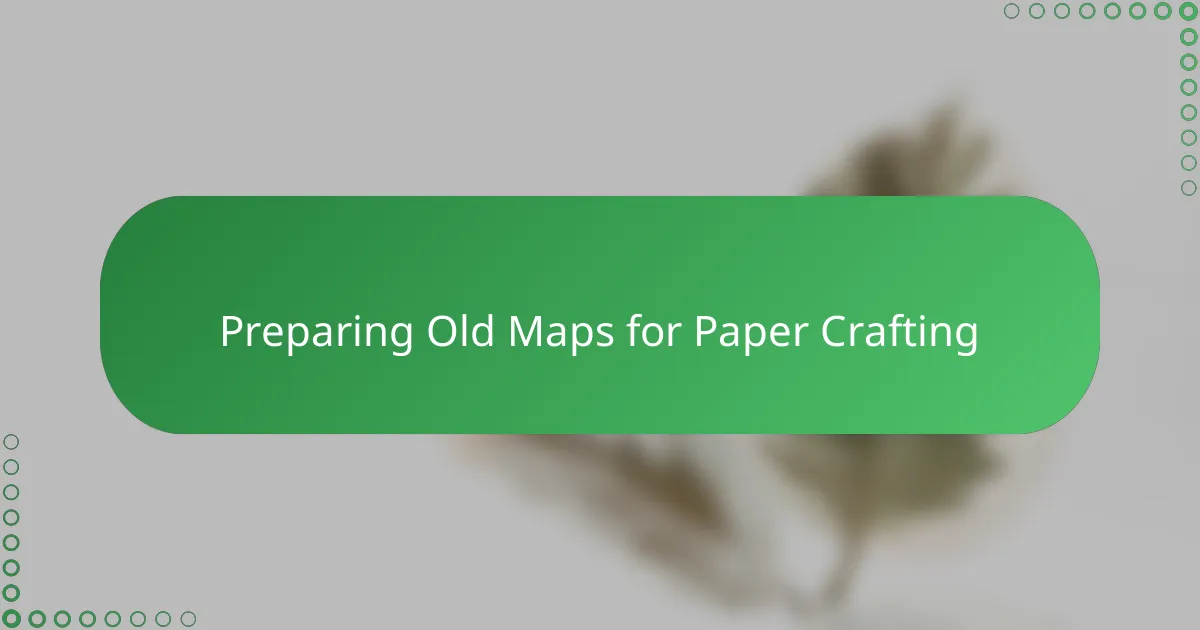
Preparing Old Maps for Paper Crafting
Before diving into cutting and shaping, I always take a moment to carefully examine the old map. I look for fragile spots or creases that might tear during crafting. Have you ever felt that slight hesitation when handling delicate paper, knowing a careless move could erase its history? This gentle approach helps me preserve its beauty.
To prepare the map, I often flatten it under a heavy book for a few days. I’ve found this routine removes stubborn folds and makes the paper easier to work with. Sometimes, tap water dampened on a cloth softens the fibers just enough to smooth them out without risking damage—a trick I learned the hard way.
Once the map feels stable, I decide whether it needs a backing or reinforcement, especially if it’s very thin. Adding a subtle layer of handmade paper behind the map gives it strength and a lovely texture that blends with the vintage look. Have you tried this? It’s like giving the map a gentle hug, making it ready for the creative journey ahead.
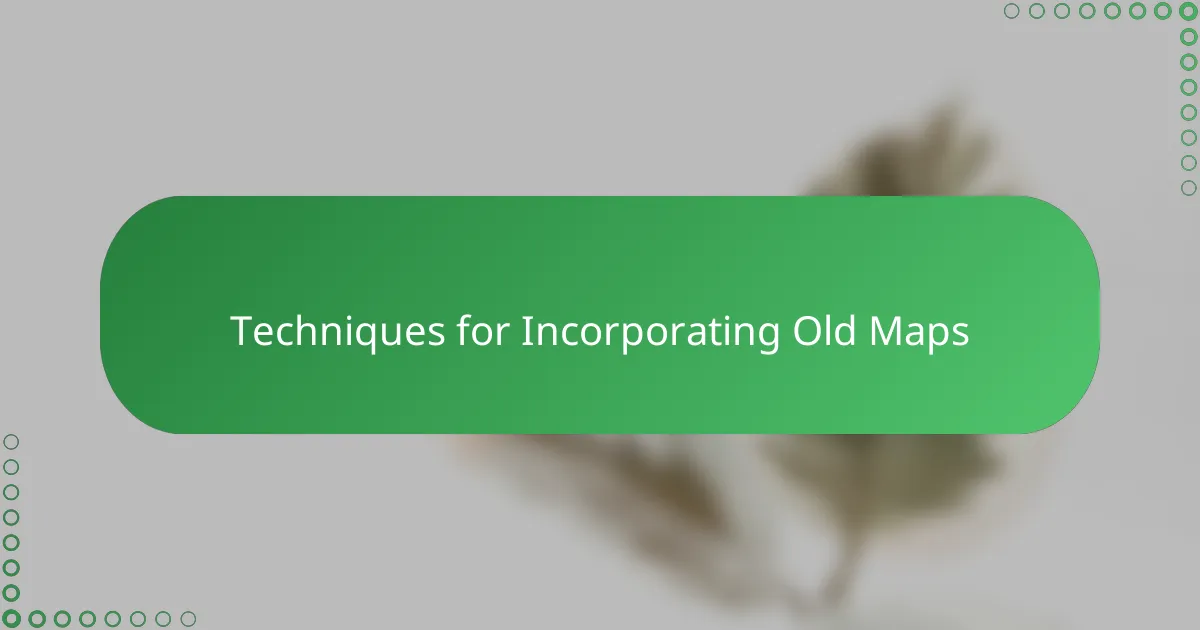
Techniques for Incorporating Old Maps
When I first started incorporating old maps into my handmade paper projects, layering was my go-to technique. I’d carefully tear sections to reveal worn edges, then overlay them onto textured sheets, letting the map’s faded lines peek through like whispers from the past. Have you ever noticed how those imperfect tears add a sense of authenticity that precision cutting just can’t capture?
Collage work quickly became my favorite method—cutting specific map details to frame important elements or create new compositions. Sometimes, I’d arrange pieces around a focal point, like a compass rose or a forgotten town, inviting viewers to explore hidden stories. This process felt like a dialogue between past and present, and it made each craft deeply personal.
Sealing the maps with natural adhesives has also made a huge difference in preserving their delicate fibers without losing their vintage charm. I’ve experimented with thin layers of wheatpaste or clear gelatin, which protect the paper while keeping its texture visible. Isn’t there something magical about knowing your craft will endure, carrying those old worlds into new hands?
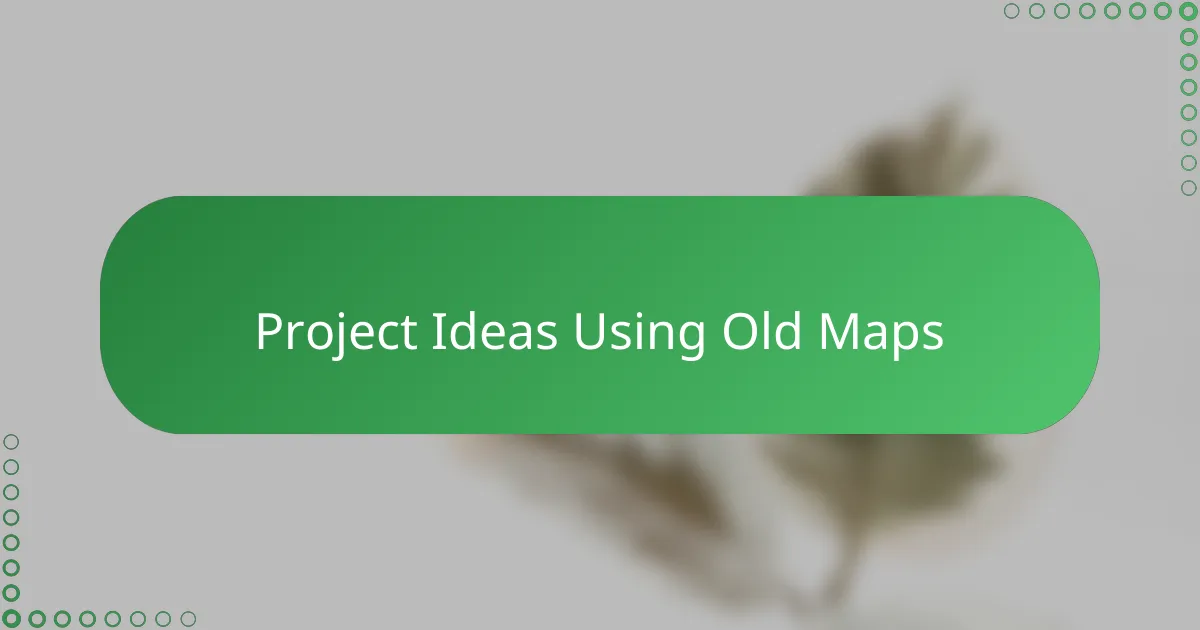
Project Ideas Using Old Maps
When it comes to project ideas using old maps, I’ve found that turning them into unique journal covers brings a special kind of charm. There’s something satisfying about wrapping a notebook in the faded geography of a place that means something—maybe where you grew up or dream of visiting. Have you ever held a journal that feels like it’s already carrying stories just waiting to be written?
Decorative envelopes are another favorite way I use old maps. Cutting the maps into envelope shapes and sealing them with handmade paper gives mail a personal, almost treasure-like quality. I remember sending a heartfelt letter this way and wondering if the recipient felt the same excitement I felt creating it—like sending a little piece of history through the post.
Sometimes, I craft wall art by piecing together map fragments into a collage that captures a theme—like a journey or an adventure. The worn edges and faded ink invite viewers to look closer, sparking curiosity about places and times long gone. Don’t you think there’s a quiet joy in watching others discover those hidden details, connecting your handmade craft to their imagination?
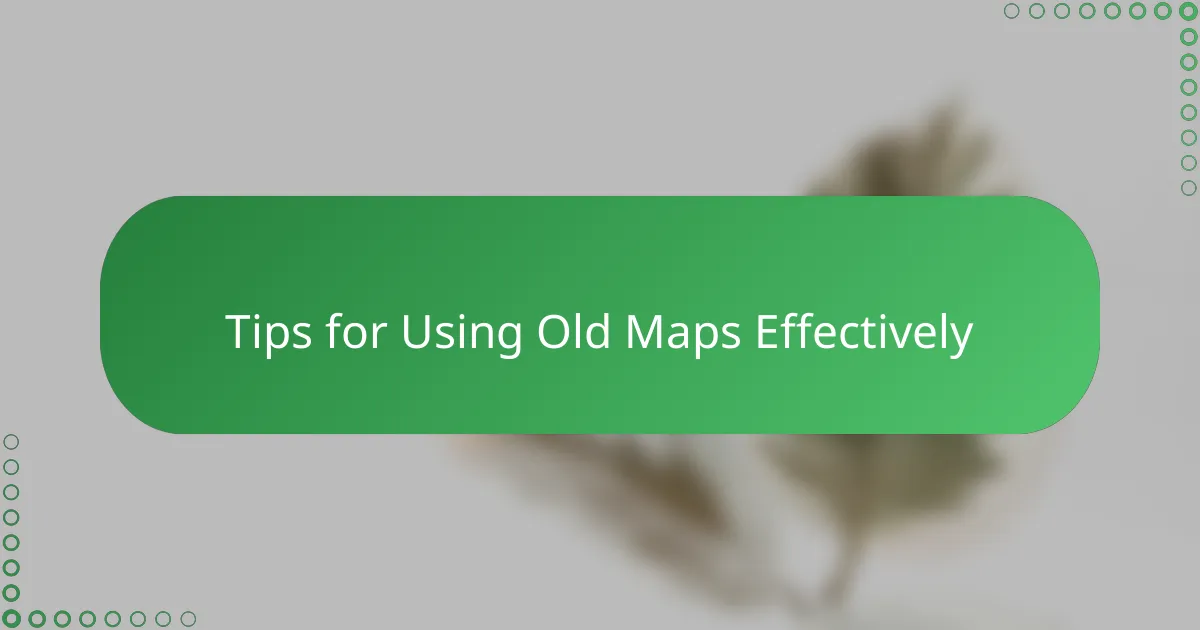
Tips for Using Old Maps Effectively
One tip I’ve learned is to always handle old maps with patience and care. Their fragile nature means a rough touch can create permanent damage, so I usually treat each map like a delicate treasure, which makes the crafting process feel both special and respectful. Have you ever found yourself hesitating before cutting into something so beautifully aged?
Another approach that’s made a real difference for me is to experiment with layering and texture. By combining torn map pieces with handmade paper, I let the maps’ faded lines and worn edges peek through, creating depth and a story within the craft itself. It’s like letting the map’s history whisper quietly in the background—do you find that this adds an irresistible charm to your projects?
Lastly, I can’t stress enough the importance of sealing and reinforcing maps once you’ve cut or glued them. Using gentle adhesives like wheatpaste preserves the paper’s texture without sacrificing its vintage feel, which keeps my crafts looking authentic and resilient. It’s comforting to know that these fragile pieces will hold up to time, don’t you agree?
